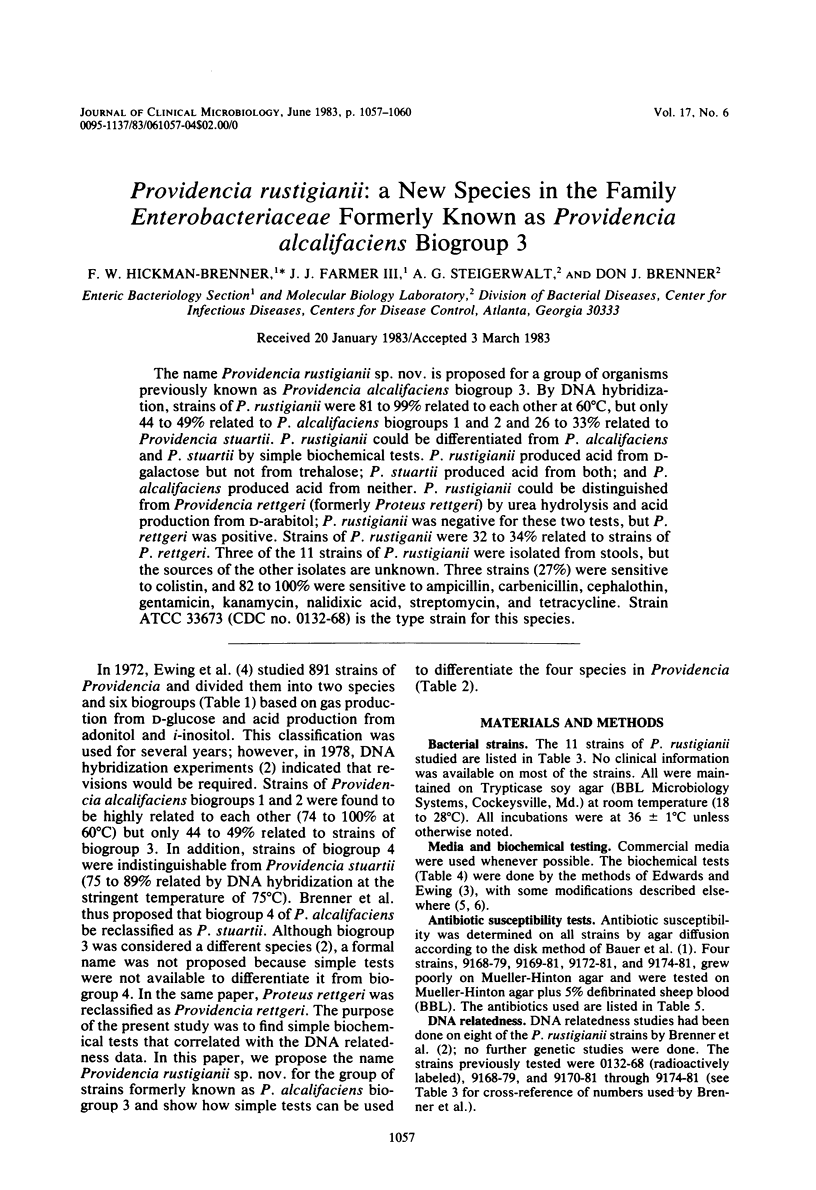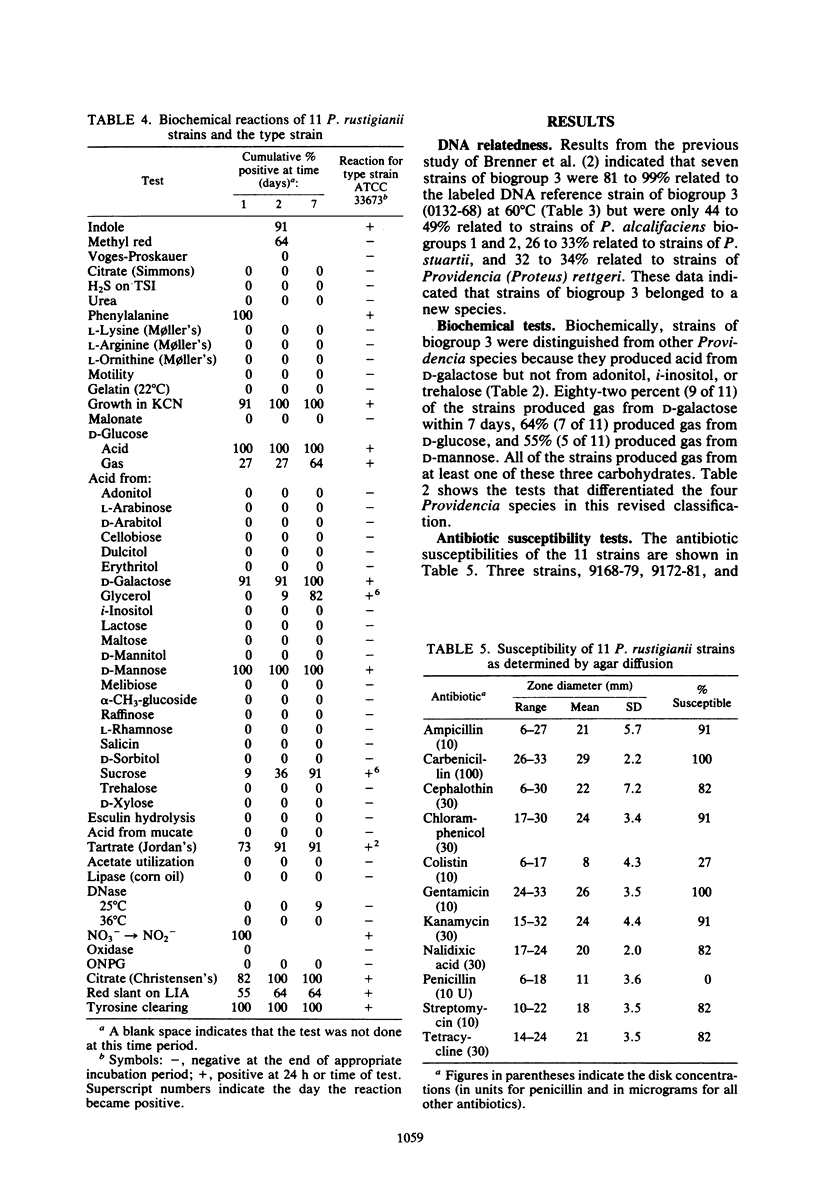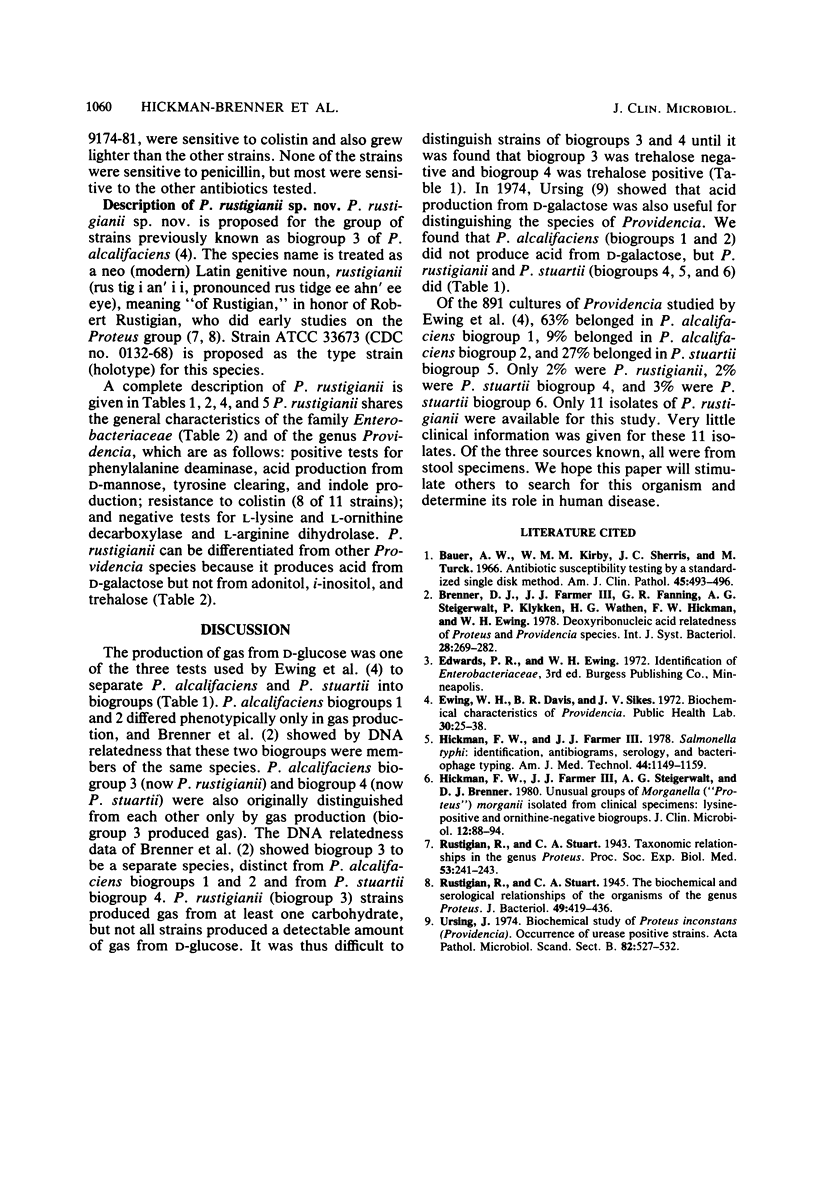Abstract
The name Providencia rustigianii sp. nov. is proposed for a group of organisms previously known as Providencia alcalifaciens biogroup 3. By DNA hybridization, strains of P. rustigianii were 81 to 99% related to each other at 60 degrees C, but only 44 to 49% related to P. alcalifaciens biogroups 1 and 2 and 26 to 33% related to Providencia stuartii. P. rustigianii could be differentiated from P. alcalifaciens and P. stuartii by simple biochemical tests. P. rustigianii produced acid from D-galactose but not from trehalose; P. stuartii produced acid from both; and P. alcalifaciens produced acid from neither. P. rustigianii could be distinguished from Providencia rettgeri (formerly Proteus rettgeri) by urea hydrolysis and acid production from D-arabitol; P. rustigianii was negative for these two tests, but P. rettgeri was positive. Strains of P. rustiganii were 32 to 34% related to strains of P. rettgeri. Three of the 11 strains of P. rustigianii were isolated from stools, but the sources of the other isolates are unknown. Three strains (27%) were sensitive to colistin, and 82 to 100% were sensitive to ampicillin, carbenicillin, cephalothin, gentamicin, kanamycin, nalidixic acid, streptomycin, and tetracycline. Strain ATCC 33673 (CDC no. 0132-68) is the type strain for this species.
Full text
PDF



Selected References
These references are in PubMed. This may not be the complete list of references from this article.
- Bauer A. W., Kirby W. M., Sherris J. C., Turck M. Antibiotic susceptibility testing by a standardized single disk method. Am J Clin Pathol. 1966 Apr;45(4):493–496. [PubMed] [Google Scholar]
- Hickman F. W., Farmer J. J., 3rd Salmonella typhi: identification, antibiograms, serology, and bacteriophage typing. Am J Med Technol. 1978 Dec;44(12):1149–1159. [PubMed] [Google Scholar]
- Hickman F. W., Framer J. J., 3rd, Steigerwalt A. G., Brenner D. J. Unusual groups of Morganella ("Proteus") morganii isolated from clinical specimens: lysine-positive and ornithine-negative biogroups. J Clin Microbiol. 1980 Jul;12(1):88–94. doi: 10.1128/jcm.12.1.88-94.1980. [DOI] [PMC free article] [PubMed] [Google Scholar]
- Rustigian R., Stuart C. A. The Biochemical and Serological Relationships of the Organisms of the Genus Proteus. J Bacteriol. 1945 May;49(5):419–436. doi: 10.1128/jb.49.5.419-436.1945. [DOI] [PMC free article] [PubMed] [Google Scholar]
- Ursing J. Biochemical study of Porteus inconstans (Providencia). Occurrence of urease positive strains. Acta Pathol Microbiol Scand B Microbiol Immunol. 1974 Aug;82(4):527–532. [PubMed] [Google Scholar]


